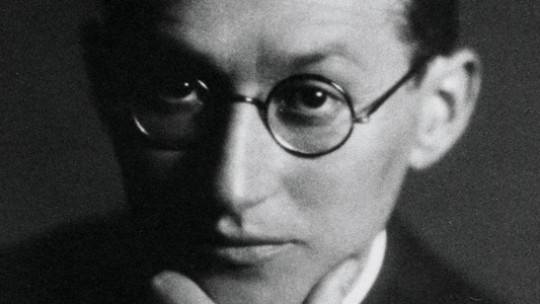
Have you ever felt like you bring more to a relationship than the other person offers you? Or that you try too hard to achieve insufficient results?
To understand why this happens and know what options we have to act, we can turn to Adams’s equity theory
This theory comes from social and organizational psychology, and can be applied in both fields. In this article we will explain what this theory consists of, we will analyze its postulates or central ideas, we will mention some examples and we will also explain its limitations. Furthermore, at the end of the article we will briefly summarize what the theory of equity conveys to us.
Equity theory: what does it consist of?
Adams’s theory of equity We can find it both in the field of social psychology and in the field of organizational psychology That is, it can be applied in these two fields.
This is based on concepts such as social comparison and Festinger’s cognitive dissonance Social comparison refers to the fact that we compare ourselves with others to value ourselves; We do not compare ourselves with “anyone”, but with people with “X” characteristics. This allows us to improve in some aspects.
On the other hand, cognitive dissonance refers to a state of discomfort that appears when what we do and what we think or feel do not coincide ; To eliminate this dissonance, we act in one way or another (either changing our minds, or relativizing things, etc.).
The psychologist John Stacey Adams, who considers himself a behaviorist (although for others he is cognitive), is the one who proposed the theory of equity (1965), being influenced by the previous concepts. He developed it within an organizational context, but we can apply it in other fields and even in everyday life. Let’s see the key points of the theory.
Key points of the theory
The theory of equity is based on a series of principles or ideas that we will see below:
1. Comparison between contributions
We insist that the theory of equity can be applied both in the workplace and in the social sphere (interpersonal relationships). Thus, people distinguish two types of elements when we strive to achieve something, or when we find ourselves in an exchange relationship (for example in a job or in a love relationship): these two elements are, on the one hand, what we contribute to the relationship, and on the other, what we receive from it
In this way, we are aware of what we contribute to work or to a relationship (time, desire, effort…), and we also become aware of what we receive from that company or that relationship/person (also time, desire, effort, financial compensation, etc.).
Consequently, we analyze it and try to maintain a balance between what we contribute and what we receive; So that cognitive dissonance does not occur, we try to ensure balance exists. If balance does not exist, and we contribute more than we receive (or vice versa), then a cognitive dissonance occurs, and by extension, a motivation (or tension) in us that makes us consider some change.
So, in a way, we perform a social comparison What does my partner give me? What do I bring to you? Is it worth it to me? Do we have a balanced relationship? And the same in a job where something is expected of us (certain objectives) in exchange for a salary.
2. Tension or motivating force
As a result of this analysis we obtain a perception of equity or balance, which translates into a ratio between what we give and what we receive. If there is no perception of equity, that tension or motivation appears mentioned, which drives us to act, to change things.
3. What can we do about this perception of inequality?
The greater the imbalance or inequality we perceive, the greater the tension we experience. In this situation, we can act in different ways: for example, reducing our efforts in the company or in the relationship, or “demanding” more rewards/contributions from the other party. The objective will be to re-balance reason.
According to equity theory, we can choose to change our comparison reference, comparing ourselves to other people, other relationships, other companies, etc. Or we can choose to abandon the relationship when it really “doesn’t pay off” and the balance always leans towards the other party.
Another option we have, and the one we most frequently use, is to maximize what we are receiving from the other person (or company) and minimize what we are contributing; It is a kind of “self-deception”, a defense mechanism that allows us to remain calm without actually changing anything about the situation. In this way, we resist making any behavioral changes, with the aim of preserving our self-esteem.
In someway, it is easier to alter the vision of what others offer us (thinking that it is actually more than what they offer us), than altering the vision of what we ourselves offer.
Limitations of the theory
However, equity theory, although it has been supported in some studies, also presents certain problems or limitations. On the one hand, in reality little is known about why we choose some referents or others to compare ourselves to (social comparison theory).
On the other hand, It is not always easy to “calculate” or determine what contributions they make to us and what contributions we make us in the context of a relationship.
Furthermore, it is not known exactly how these comparison or contribution calculation processes change over time (or why they change).
Synthesis
In summary, Adams’ equity theory says the following: when in an exchange relationship (for example a friendship relationship, a relationship, or in the context of a company), we perceive that what we contribute is greater than what we receive (or vice versa), a feeling of inequity, restlessness or tension appears (cognitive dissonance). This perception arises as a result of making a balance between the costs and benefits of the relationship
To get rid of this feeling of inequality, we can act in different ways, as we have already explained. We can choose to act directly on the other (on their contributions or results), or we can act by increasing or decreasing our contributions/investments. We also have the option to leave the relationship, or to change the objects with which we compare ourselves.
Example
Illustrating the theory of equity in an example we propose the following:
If, for example, in a relationship, I have the feeling that I am always the one who does things for my partner (accompanying her to places, leaving her money, sharing my time, going to pick her up from places, etc.), and that She doesn’t make any kind of effort for me, in the end I will end up perceiving that feeling of inequity or imbalance in the relationship. That is, the result of the cost/benefit balance will be “negative” and will not compensate me.
This will cause me to act, for example, by stopping changing plans to see her, leaving the relationship, or valuing other good things about the relationship that allow me to continue with it without having cognitive dissonance.








